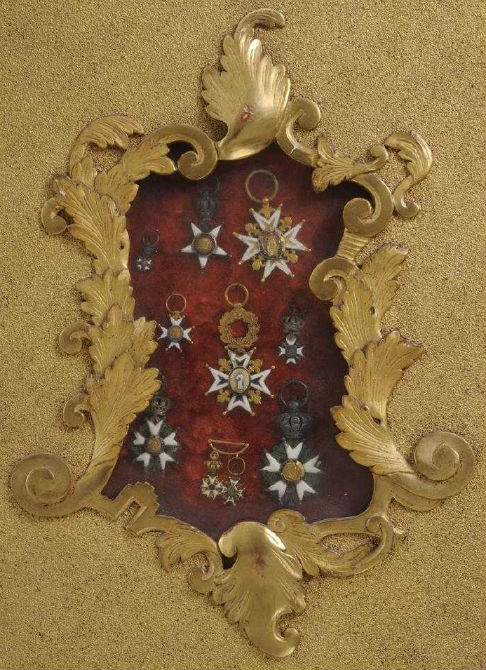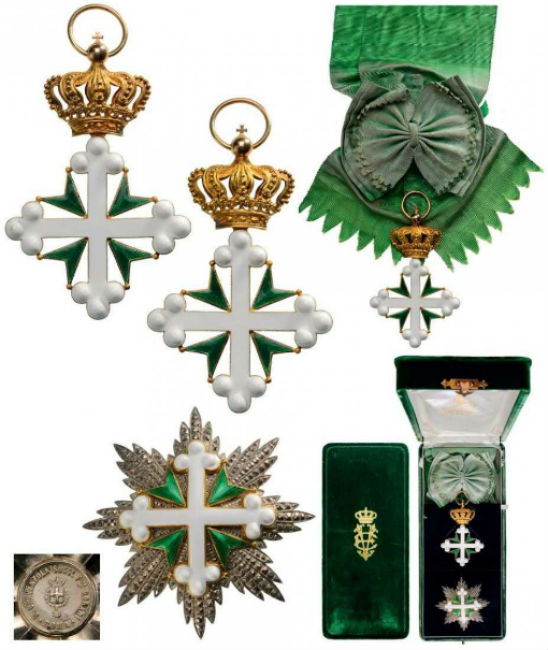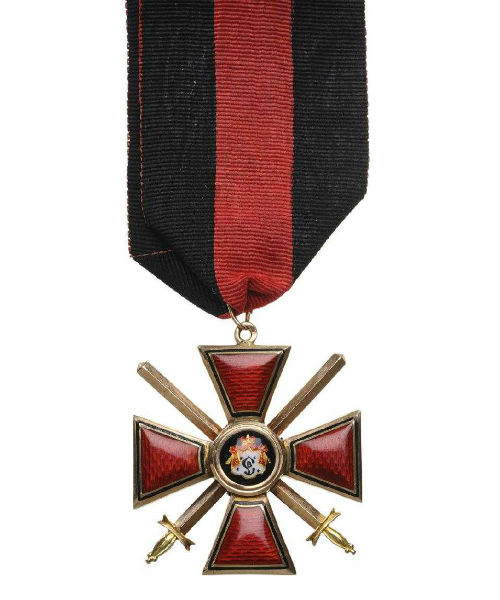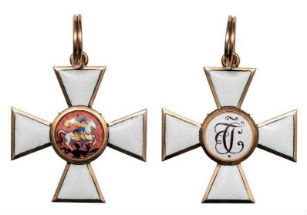
NEW YORK – Varieties of military orders, badges, medals and decorations are endless and the ones relating to orders of saints from all across Europe are highly prized. They tend to be highly ornate and striking. While medals have sentimental value to the person who originally received them, collectors decades later admire them for their design, and their collector value will usually far surpass a medal’s bullion value of the metal it is made from.
“During the Victorian period from 1837 to 1901, military heroism was greatly admired and the issuing of medals was an iconic symbol of this culture,” according to commentary on the website of UK-based Warwick & Warwick Auctioneers of Collectibles. The company noted that military medals can be divided into two groups: medals awarded for valor, and medals awarded for participating in a particular military campaign.
Among collectible orders are decorations from the military order of St. James of the Sword, a Portuguese order founded around the year 1170. The six classes of insignia range from Grand Collar where the badge of the order is worn on a chain and the star of the order is on gold, worn on the left side of one’s chest, to the Knight class where the badge is worn on a silver chain on a plain ribbon. Badges were meant to hang from a ribbon or a chain.

In France, important military orders included that of St. Louis. King Louis XIV founded this chivalry order in 1393 to honor the bravest of his military’s officers. It preceded the equally iconic Legion of Honor and shares a red ribbon with the legion.

Also of note is the St. Helena medal, which debuted in 1857 by Napoleon III to be awarded to surviving soldiers of Napoleon Bonaparte’s Grande Armée, who served under his command in his campaigns from 1792 to 1818, according to commentary on the website of UK dealer North East Medals. About 400,000 of these distinctive medals, portraying Napoleon I on the front, were awarded. “The medal was nicknamed ‘the chocolate medal’ because of its color,” the website entry noted.
Having its beginnings in Jerusalem in the 1100s, the Order of St. Lazarus is closely associated with the Order of St. Maurice in Italy and the Order of Our Lady of Mount Carmel in France. While this order began as and was primarily a hospital-based order, members did take part in military battles in the 12th century. Green enamel is often part of badges and the crosses, harkening back to when Lazarists wore a green cross on their uniforms. “As a military order, there is a rank structure that conforms with European chivalric custom and decorations (medals) to note service or achievement,” according to commentary on the website of the Military & Hospitaller Order of St. Lazarus of Jerusalem, Grand Bailiwick of Scotland, which notes that all promotions require approval of the Grand Master.

Medals signifying the Russian Order of St. Vladimir often feature golden crosses with arms filled in with red enamel and bordered by gilt and black enameled bands, flanked by two crossed swords and suspended by a red and black striped ribbon. The center plaque usually features an enameled monogram of St. Vladimir the Great inside a gilt ring. Badges from the Order of St. George, the highest military decoration in the Russian Empire, such as a Commander’s Cross, bear portraits of the knights of the Order of St. George and show St. George on horseback.

Medal collectors all over the world often share their passion for – and research – about medals with groups such as the Orders and Medals Society of America, which shares much information about medals and military decorations online. “The Imperial Military Order of St. George was instituted on the 26th of November, 1769 by the Empress Catherine the Great to reward both military and naval officers for exceptional bravery,” says the society.
Along with private collectors, public institutions avidly collect military orders and decorations, such as the Green Howards Museum in Richmond, North Yorkshire, England, whose medal room is famous and attracts visitors from all over, which has a significant collection of Victoria Crosses and George Crosses among its thousands of British war medals.
Whether for patriotic reasons or for their own artistic merit, badges and medals from military orders are highly collectible today.



